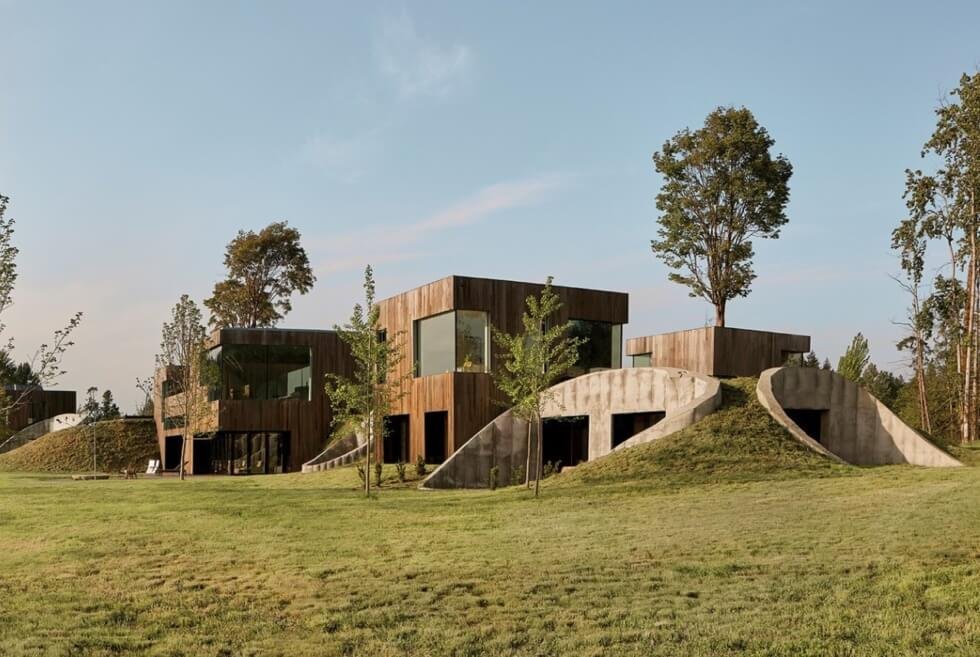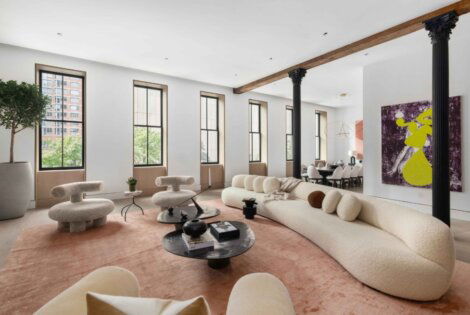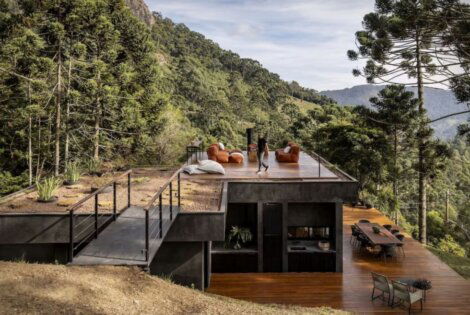Canada-based artist and designer Omer Arbel built this family home on a hayfield in the Canadian Pacific Northwest called the 75.9 as an extension of its landscape. The home features a unique architecture comprising of large lily-pad shaped columns connected by pathways covered with lush grass so it blends with its green oasis.
These curved walls provide access to the interior spaces and facilitate movement across the volumes. Arbel came up with this innovative idea for the home’s structure after an experiment using concrete poured over fabric that’s been stretched between lightweight plywood ribs, which resulted to the creation of fabric-formed columns.
“The fabric formed concrete elements are treated as if they were found archeological ruins in the hay field landscape, with the house considered a contemporary construction built around and among them. Differing height and position for each column creates a cinematographic narrative of domestic habitation. The trumpet shape of each column is hollow, allowing planting of mature trees on the inhabited roofscape,” Arbel said of 75.9
Meanwhile, four double-height volumes made of glass and cedar wood flock the living room and the hollows created by these columns have been planted with Magnolia trees on the roof. The dining space and kitchen are also set under one of these columns. Interior design exudes warmth using timber fixtures, Bocci lighting fixtures, and a Japan-inspired indoor garden.
“A low-ceilinged zone, rendered in wood, wraps the perimeter of the concrete column elements, offering relief from monumentality and emphasizing the horizontal expanse of the hay field beyond. This compressed zone offers a material contrast to the concrete vaulted spaces and operates as a circulation conduit,” Arbel said. He also utilized the surrounding hayfield to cover the connecting pathways, allowing the entire roofing of 75.9 to traverse from the exterior and contributing to the archeological reading.
Check It Out





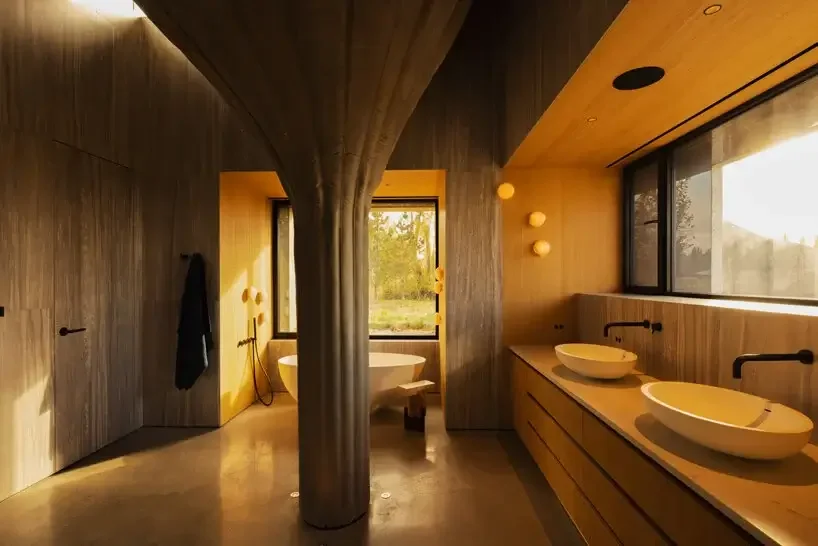
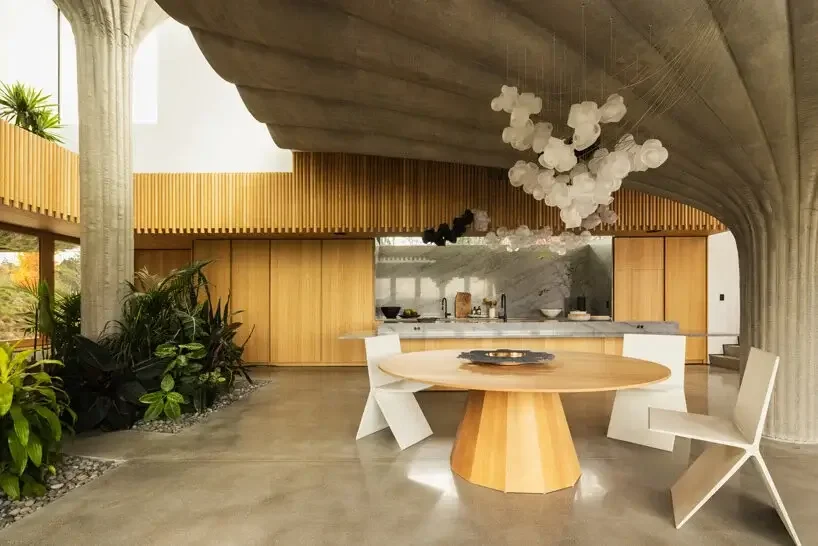
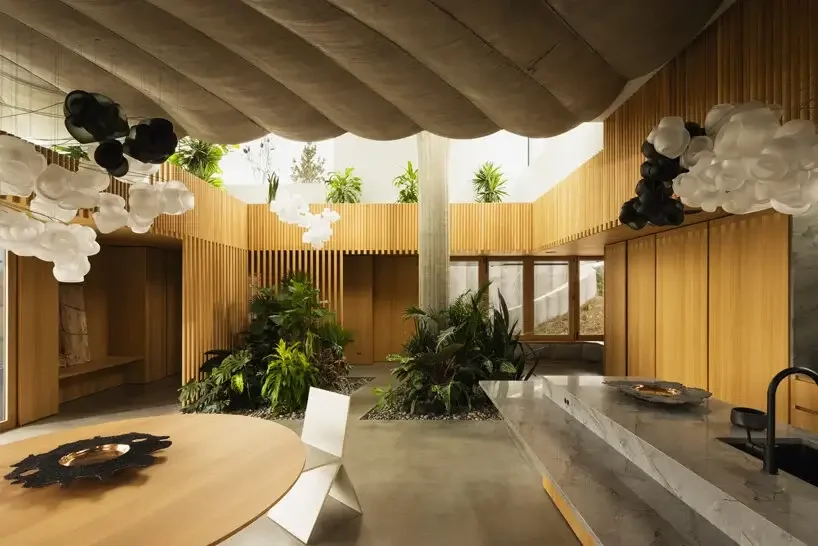
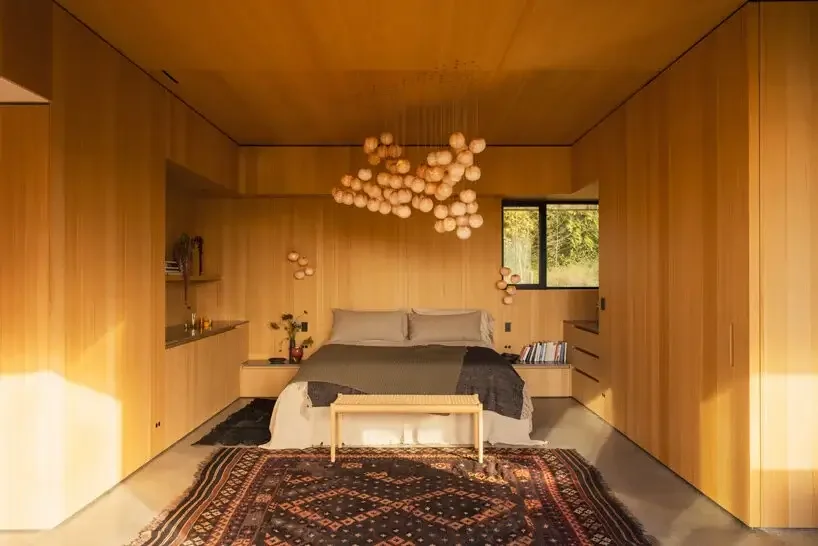
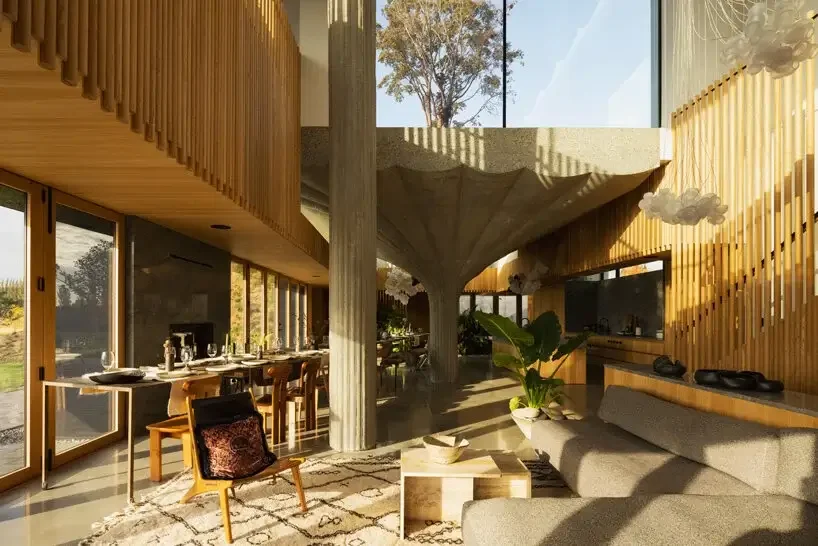
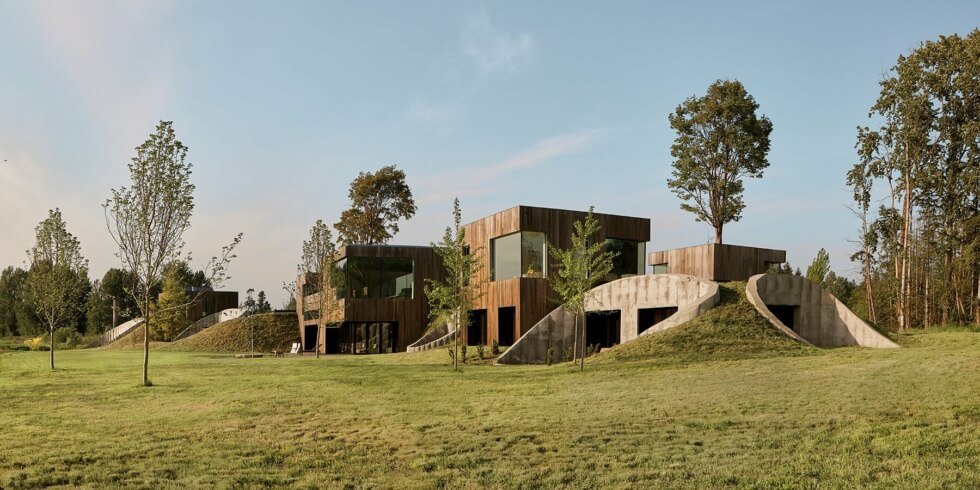
Images courtesy of Omer Arbel

